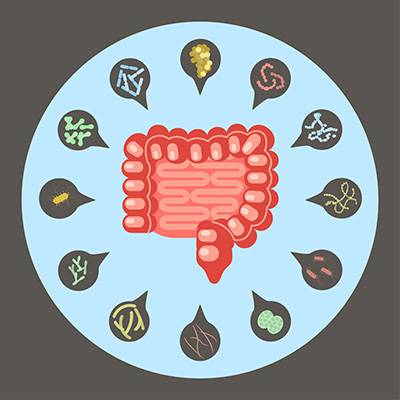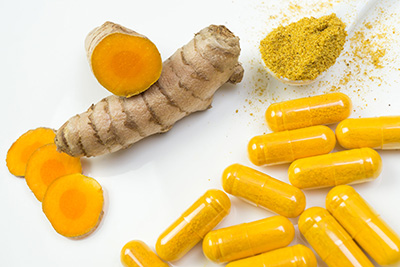What Is an Allergy? Naturopathic Perspectives
Spring has finally arrived, and with it have come lots of sunshine, birds coming out to play—and, unfortunately, also a lot of sneezing, runny noses, and congestion. For allergy sufferers, this time of the year can be both a blessing and a curse. While the most effective way to deal with your allergies is to prepare your body 2–3 months before “allergy season,” there are still ways you can help reduce symptoms.
In order to understand some of my recommendations below, you must first understand what an allergic reaction is. Simply put, it is an immunoglobulin E (IgE) immune response that leads to the release of histamine (a protein), which causes the swelling and congestion that is associated with an allergic reaction. However, histamine is not inherently a bad thing; it has systemic effects and is released from storage in times of injury, infection, allergy, or an inflammatory reaction. It helps our tissues become more permeable to allow nutrients to get where they need to be to aid in healing. It also helps signal our bodies when it is in a dangerous environment; for example, it causes constriction of our lungs to prevent inhalation of toxic fumes. It is only when the body is unable to clear histamine—or that it is present in excessive amounts—that it becomes problematic. Histamine can cause other systemic concerns such as pain that is not relieved by pain killers, brain fog (e.g. difficulty thinking), and diarrhea.
A naturopathic approach to allergies involves taking this knowledge and then helping the entire body either mitigate or reduce this histamine reaction. The following list includes considerations to help combat allergies.
Decrease High-Histamine Foods
Yes, histamine can be found in foods! “Histamine intolerance” describes a condition where there is an overload or increased sensitivity to histamines, either due to genetics, consumption, or risk factors such as impaired gut lining, kidney and/or liver issues, and chronic stress. Common symptoms of histamine intolerance include bloating, diarrhea, abdominal pain, and fullness after meals, as well as less common symptoms such as dizziness, skin rashes, headaches, and nasal congestion.[1]
Regardless of whether you have this condition or not, you help decrease the load on your body when you are mindful of high-histamine–containing foods, or foods that increase the release of histamine. Examples include nightshade vegetables (eggplant, potato, tomato, bell peppers, etc), fermented foods and drinks (yes, I’m sorry, this also includes wine), artificial colours and preservatives, foods with viable yeast (such as sourdough bread), and even certain fruits such as pineapple, bananas, strawberries, and citrus fruits (these all seem unfair considering picnic season is also here...).
 Support Your Liver
Support Your Liver
The liver is one of our most crucial organs, as it acts like a gateway which processes toxins, chemicals, and hormones before they are broken down, absorbed, and/or used by our bodies. Often times, due to our environment, stress, as well as poor lifestyle and dietary habits, the liver becomes overburdened, becomes unable to deal with any extra “activity,” and can contribute to an easily triggered histamine response. How do we help decrease that burden? Eat a whole-foods diet, as many vitamins (such as vitamin B6) are required for detox pathways. Decrease the amount of packaged foods you consume to decrease the amount of chemicals to process. Include more bitter foods in your diet, such as bitter melon, dandelion greens, arugula, and kale to help with bile production (which helps you to digest your food more effectively). Drink dandelion tea, a root herb that has been shown to help with liver function. And, last but not least, increase consumption of cruciferous vegetables like cauliflower, kale, broccoli, Brussels sprouts, etc.
Get Moving and Get Sweating
Open up those pores and allow your lymphatic system to flow! The lymphatic system is often an overlooked aspect of health; however, it is important to help remove waste products from the body and is also a crucial “highway” for immune cells to get where they need to be. Congestion can put additional burden on your liver, impair your immune response, and have your body feeling heavy and sluggish. Whether this be through a sauna, walking, playing sports, swimming, or dancing (my personal favourite), giving your lymphatic system consistent opportunity to breathe helps this system work efficiently and decreases congestion in the body. Often times, consistently tight muscles contribute to decrease lymphatic flow, so incorporating a yoga routine into your weekly activity can help as well.
 Heal Your Gut
Heal Your Gut
A phenomenon termed “leaky gut” (or increased intestinal permeability) is something increasing in our North American society today, due to chronic stress, high consumption of refined sugars and simple carbohydrates, poor sleep, impaired digestion, and (especially) continued consumption of food sensitivities. In “leaky gut,” the lining of your digestive tract is compromised, allowing food particles to end up in the bloodstream (where no food should be), and your body then mounts an immune response to those particles (because it is foreign matter that shouldn’t be there).
Identifying and eliminating food sensitivities decreases inflammation in your gut and overall body, and it gives an opportunity for your gut to heal. Dairy is a big food sensitivity that is both common and very inflammatory to allergy sufferers. It is also considered a “damp” food in traditional Chinese medicine, which are absolute no-gos for allergies. Naturopathic doctors are able to run a blood test for food-sensitivity testing to identify the foods you should be eliminating. They also use supplements and herbs—such as probiotics, glutamine,[2] aloe, and slippery elm—to help repair your gut lining and decrease your risk of further immune concerns.
Address Your Risk Factors (Autoimmune Diseases and Stress in Particular)
As previously mentioned, allergies are an immune response. In autoimmune diseases, the immune system is, simply put, “overactive,” which can tie into the increased susceptibility to allergies for autoimmune diseases such as Hashimoto’s (underactive thyroid), rheumatoid arthritis, lupus, type I diabetes, and celiac disease. Research has found that there are indeed common pathways between autoimmune diseases and allergies.[3] Naturopathic doctors use herbs, supplements, and acupuncture—on top of lifestyle and dietary modifications—to treat autoimmune conditions. As noted multiple times, chronic stress can have a damaging impact on your health, be it the way your body processes histamine, how your liver functions, or even on the integrity of your gut lining. Stress management is an integral part of any treatment plan.
 Take Anti-inflammatory and/or Antihistamine Supplements
Take Anti-inflammatory and/or Antihistamine Supplements
I always say that supplements are supplementary to any treatment plan, and that no magic pill will work without changes to lifestyle and diet. There is, however, plenty of research around certain supplements for many conditions, and it is often necessary to take supplements to work in synergy with the lifestyle and diet changes we make. Quercetin is an excellent example of a supplement that has both anti-inflammatory and antihistamine effects, and is shown to be effective for allergy symptoms.[4][5] Curcumin is a favourite anti-inflammatory supplement of mine that also helps with liver function.
It is very common to ask “How much should I take?” or “Which brand should I buy?” The quality and dose of your supplement is important and should be determined on an individual basis by a naturopathic doctor. This is because of the immense variability you see in the health-food stores, and due to the fact that not all the information you would need is on supplement labels. Curcumin is a prime example of where a professional recommendation is necessary, as it is a supplement that is inherently poorly absorbed in the body, and bottles can be priced from $20 to $100+. It can be easy to grab one of the cheaper options, not knowing that the quality varies significantly from different products, and that there is a reason why some are more expensive than others. At the same time, more expensive isn’t necessarily better.
This is why it’s important to have a professional with experience using natural health products to help navigate through your supplements. You may be thinking “Well, why not just take an antihistamine pharmaceutical (such as Reactine®) if histamine is the problem?” In some cases, yes, you have to do what you have to do. However, antihistamines only block the binding site of histamine; they do not help the body eliminate excess histamine nor do they reduce the sensitivity to histamines. While it may be a good temporary solution, it also creates a dependence on antihistamines, as the root of the problem is not being dealt with.
Other treatments to help with allergy symptoms and overall balance in the body are acupuncture and cupping. These are effective at decreasing congestion, increasing blood flow, and helping to realign the body back into a state of health. Between four and eight treatments are usually recommended, in conjunction with lifestyle and dietary changes.
Note that the prior information is meant to be educational and used as a general guideline. Please consult a health-care practitioner before starting any treatment regime.
References
- Schnedl, W.J., et al. “Evaluation of symptoms and symptom combinations in histamine intolerance.” Intestinal Research, Vol. 17, No. 3 (2019): 427–433.
- Wang, B., et al. “Glutamine and intestinal barrier function.” Amino Acids, Vol. 47, No. 10 (2015): 2143–2154.
- Kreiner, E., et al. “Shared genetic variants suggest common pathways in allergy and autoimmune diseases.” Journal of Allergy and Clinical Immunology, Vol. 140, No. 3 (2017): 771–781.
- Shaik, Y.B., et al. “Role of quercetin (a natural herbal compound) in allergy and inflammation.” Journal of Biological Regulators and Homeostatic Agents, Vol. 20, No. 3–4 (2006): 47–52.
- Micek, J., et al. “Quercetin and its anti-allergic immune response.” Molecules, Vol. 21, No. 5 (2016): 623.
- - - - -
 Priscilla Tang, ND, is a graduate of the Canadian College of Naturopathic Medicine (CCNM) in North York, where she completed a 4-year Doctor of Naturopathy program.
Priscilla Tang, ND, is a graduate of the Canadian College of Naturopathic Medicine (CCNM) in North York, where she completed a 4-year Doctor of Naturopathy program.

 Stores
Stores